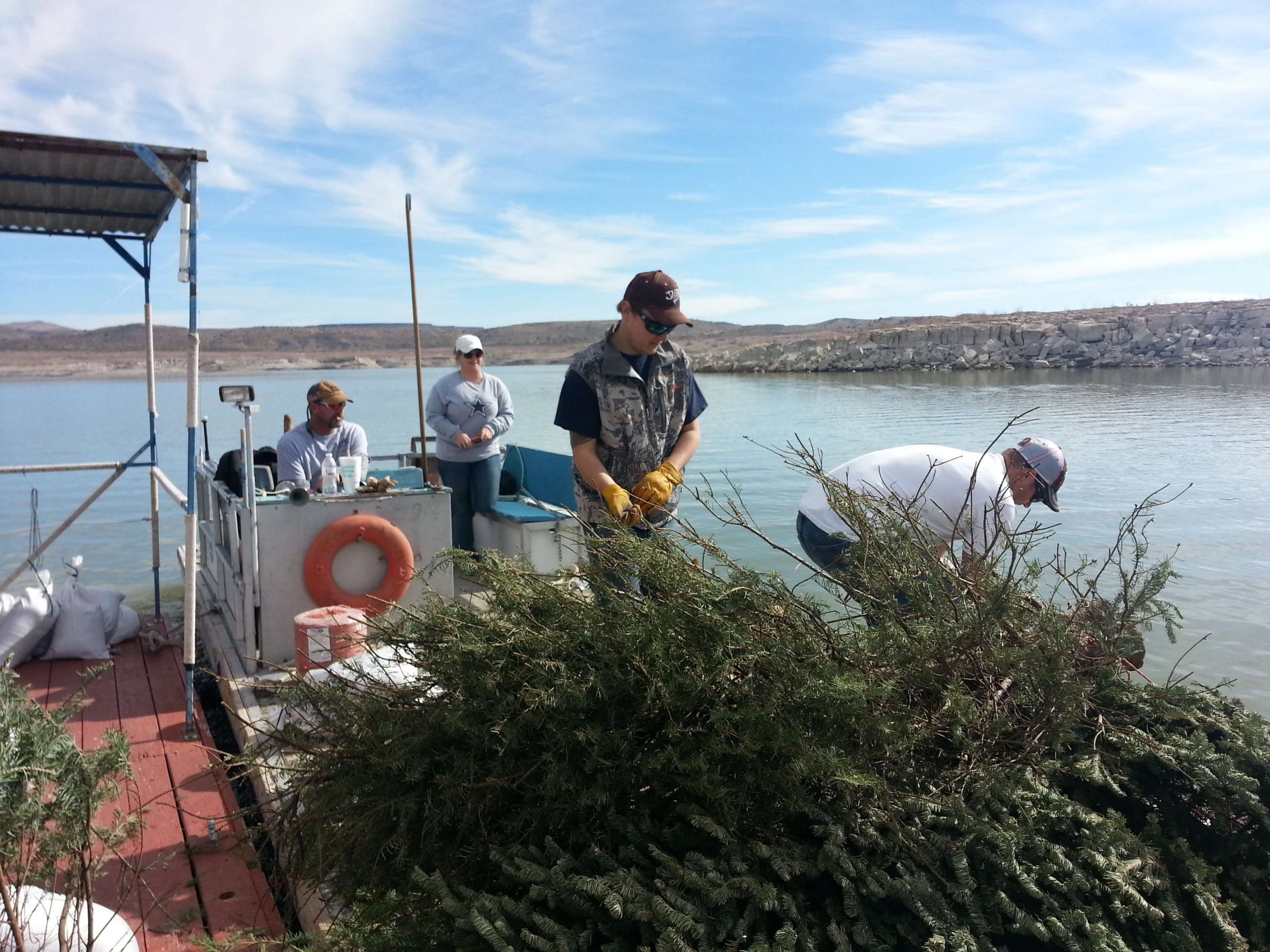
ELEPHANT BUTTE, N.M. — Anglers from all over New Mexico hauled Christmas trees to Elephant Butte Reservoir following the holidays to help improve habitat as part of a multi-year coalition effort led by Earl Conway, conservation director for the New Mexico B.A.S.S. Nation.
“We collected unsold trees first and then collected the used ones later,” Conway said. “We estimate that we put in more than 2,000 trees, but we lost count after the semi-trailer load.”
Such work is needed to counteract the effects of drought and water level withdrawal in spring to provide for irrigation, said Conway.
“Even if actions are taken, there is no guarantee that gamefish populations can be significantly increased,” he added. “But every little bit of new habitat should help.”
With the Albuquerque Hawg Hunters taking the lead, the Southwest Adapt-a-Cove project features a wide range of habitat improvements, including spawning platforms, floating wetlands, and shoreline plantings during summer when the water is low.
“If we can get native plants to grow again on the banks — cockleburs are what the fish survive on in the spring now — it will be substantial improvement,” Conway said. “Vegetation will provide more cover and food for the fish than anything else we could do.”
Conway received a five-year permit from the U.S. Bureau of Reclamation to add Christmas trees and other habitat with the support of New Mexico Game and Fish and State Parks.
“We have to follow the permit conditions carefully to ensure we don’t harm water quality, cultural/natural resources and endangered species,” Conway said. “Unapproved materials and plants or actions outside the permitted areas will jeopardize the whole effort and violate regulations.”
Funding partners for the restoration effort include Shimano, the Audubon Toyota TogetherGreen Fellowship and Friends of Reservoirs. David Ewald of Fishiding and Dave King of Mossback, meanwhile, have donated artificial habitats, while anonymous donors have contributed equipment, and materials, and helped with transport of trees and materials.
“In particular, a pontoon boat or houseboat platform is needed to transport fish habitat structures and to become a live release boat for tournaments,” Conway said. “The marina operators have been supplying their barges until we have our own.”
Besides habitat improvements, other strategies being pursued include non-state-funded fish rearing and stocking, better catch-and-release fish care at tournaments, and establishment of off-limits areas in selective spawning coves during May and June.

